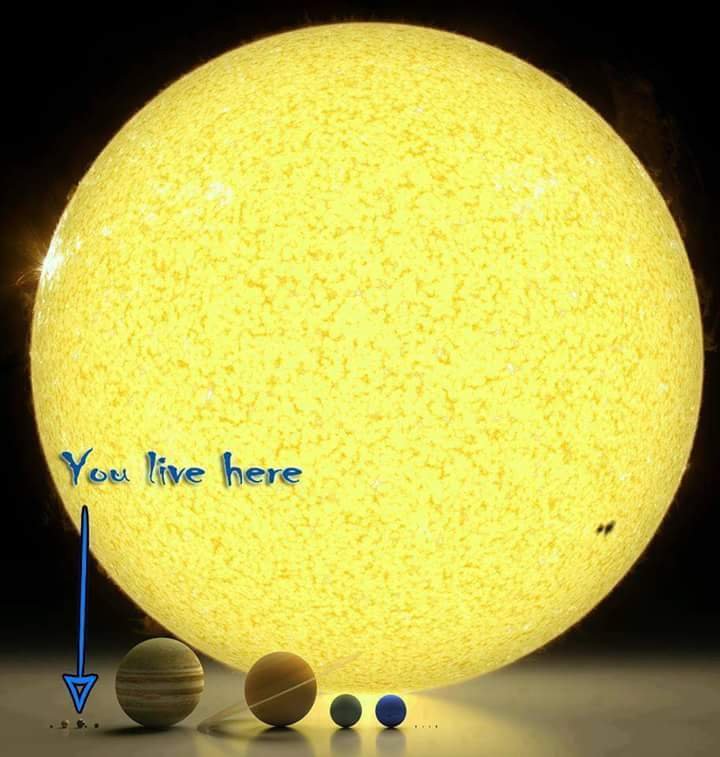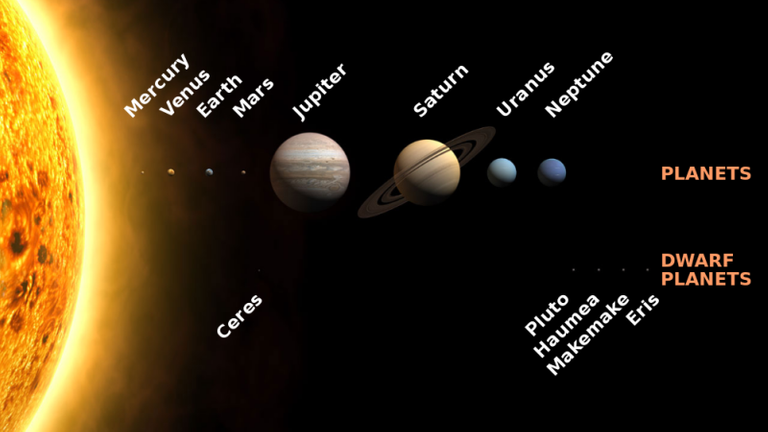The solar system is about 4.6 billion years old with 99.86 of it's mass consisting of its only star which is the SUN.Yeah the stars you see up in the skies above at night are not in our solar system, although they are a few light years away in the milky way or another galaxy.

The a rotating yellow dwarf star whose powerful gravitational force causes numerous objects to revolve around it in nearly circular orbits including the planets, moons, comets, meteoroids, asteroids, dust and gas.The nearest star, outside our solar system is a a red dwarf star called Proxima Centauri (4.24 light-years away), followed by Barnard’s Star in the constellation of Ophiuchus (6 light-years), The brightest star in the night sky, Sirius (-1.46 magnitude) in the constellation of Canis Major,this is the 5th closest star to Earth at a distance of 8.6 light years(a light year is a unit of astronomical distance equivalent to the distance that light travels in one year, which is 9.4607 × 1012 km (nearly 6 million million miles).
The Earth is located 93 million miles (150 million kms) away from the Sun it takes roughly 8 minutes 20 seconds for sunlight to reach the earth by covering this vast distance by traveling at the speed of light (186,282 miles per seconds). The 8 planets in our solar system are divided into inner planets of Mercury, Venus, Earth and Mars, which are basically made of rock and metal; and the outer planets of Jupiter, Saturn, Uranus and Neptune, which are made of hydrogen, helium and other gases. Despite being referred to as gas giants, intense heat and pressure towards their centres cause their gases to compress into liquid metal or rock. Pluto formally known as the ninth planet, is no longer a planet in our solar system because it went out of orbit.

Image source
Generally the closer a planet to the sun the hotter the planet, mercury is the closest planet to the sun but it is not hotter than venus due its thick carbon dioxide atmosphere which creates a greenhouse effect, whilst Mercury has a very thin atmosphere and so cannot trap the Sun’s heat very easily.The closer the planet is to the Sun, the quicker is its annual orbit around the sun.
The galaxy our solar system belongs to is the MILKY WAY GALAXY, the nearest galaxy to it is the ANDROMEDA GALAXY which is a whooping distance of 2.5 million light years away. There are about 100 million solar systems in the milky way, which makes me think there are still more things to be discovered in astronomical science.
And we are proud of ourselves! :))
Yeah, we are one of the most complex and advanced life forms on earth blessed with intelligence. So yeah we are
NICE POST KEEP DOING
I LIKE YOUR POST FOLLOW ME @apon6431
Thanks
Great work @ikhizama, the solar system is indeed mysterious
Thanks man